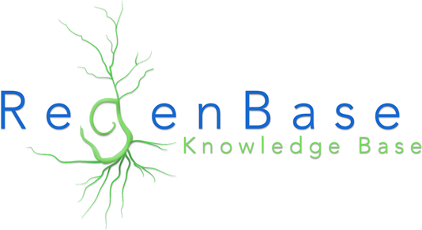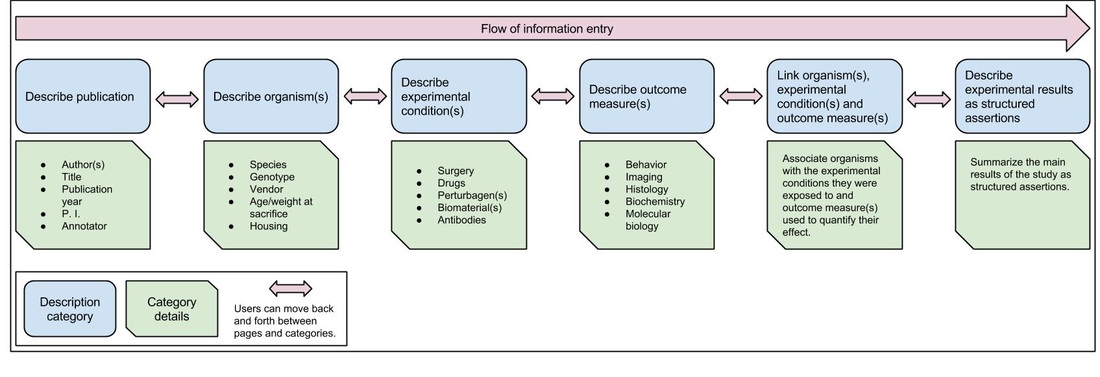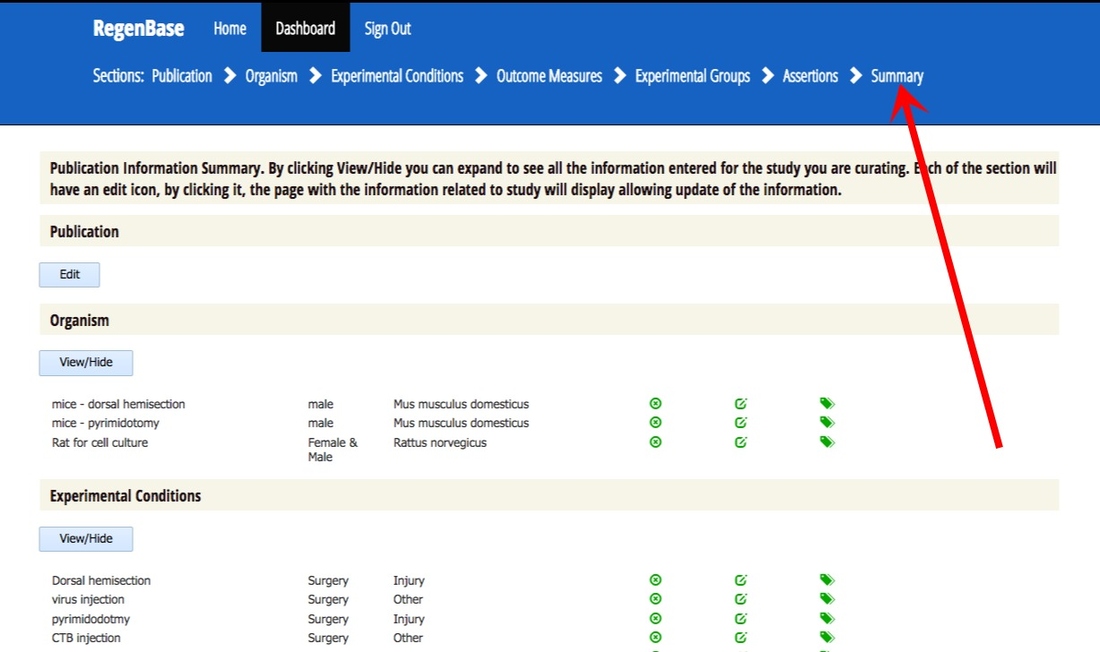Work Flow
The workflow for the annotation tool is similar to the way a typical paper is written: first the publication and author information is entered.
Next the animals are described. In this section it is possible to describe different transgeneic animals or different species of animals, even if several different kinds were used in one publication.
Next the experimental conditions are detailed such as different surgeries performed and treatments that we call perturbations. The perturbations could be drugs, viral vectors, siRNAs, or biomaterials. It also covers key reagents used in the experiments, including all antibodies.
The next section describes any outcome measures.
Then there is a section where study groups are described. This is where animals are associated with specific surgeries, treatments and outcome measures. This is pretty complicated and has a tutorial of it’s own.
The last section is where you get to describe your results. While computers may be able to make inferences about the conclusions of an experiment if all metadata and data are correctly annotated, clearly investigators should have the chance to tell everyone their key observations.
Having annotated many papers for this project we know that the person entering the information has to constantly go back and forth between the different sections so the task bar at the top (white buttons in blue field below) allows easy navigation.
There is a summary page (red arrow below) that allows you to quickly to review basic information about what you have entered. This is a good place to review to ensure you have captured all the key categories before starting to build experimental groups.
Next the animals are described. In this section it is possible to describe different transgeneic animals or different species of animals, even if several different kinds were used in one publication.
Next the experimental conditions are detailed such as different surgeries performed and treatments that we call perturbations. The perturbations could be drugs, viral vectors, siRNAs, or biomaterials. It also covers key reagents used in the experiments, including all antibodies.
The next section describes any outcome measures.
Then there is a section where study groups are described. This is where animals are associated with specific surgeries, treatments and outcome measures. This is pretty complicated and has a tutorial of it’s own.
The last section is where you get to describe your results. While computers may be able to make inferences about the conclusions of an experiment if all metadata and data are correctly annotated, clearly investigators should have the chance to tell everyone their key observations.
Having annotated many papers for this project we know that the person entering the information has to constantly go back and forth between the different sections so the task bar at the top (white buttons in blue field below) allows easy navigation.
There is a summary page (red arrow below) that allows you to quickly to review basic information about what you have entered. This is a good place to review to ensure you have captured all the key categories before starting to build experimental groups.


